The Grand Canyon of the Tuolumne: Breathtaking Views Await!
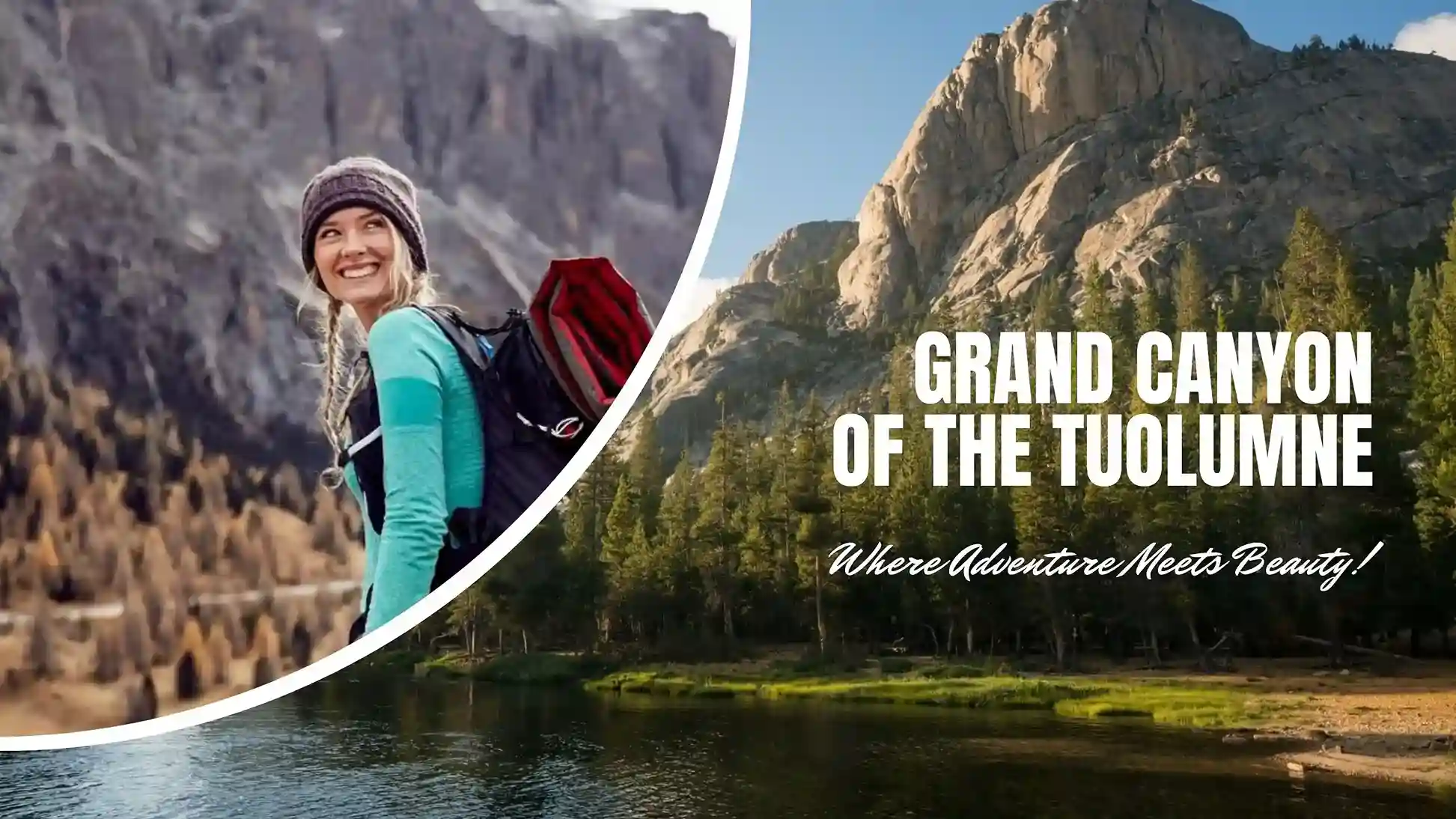
While exploring the Grand Canyon of the Tuolumne many people come across several difficulties which can affect their impressions. Everything from traversing, using maps and identifying areas to set up a camp can be a daunting exercise especially for the first-timers.
Getting a local guide or joining a group tour are helpful and informative. Choosing good equipment and studying the area using maps and other references make a lot of difference. If you can prepare for it, then instead of worrying on things that may went wrong, you can really enjoy the magnificence of the Grand Canyon of the Tuolumne.
Tuolumne’s Grand Canyon is in the Yosemite National Park of California. It is rather a splendid creation of Mother Nature that unadors much of her potentiality. About 2000 feet high with striking cliffs, beautiful wild flowers and the nice flowing Tuolumne River for photography and hiking. The Grand Canyon of the Tuolumne invties hikers as well as any place I know into the heart of California’s wilderness.
Geographic Features and Landscape
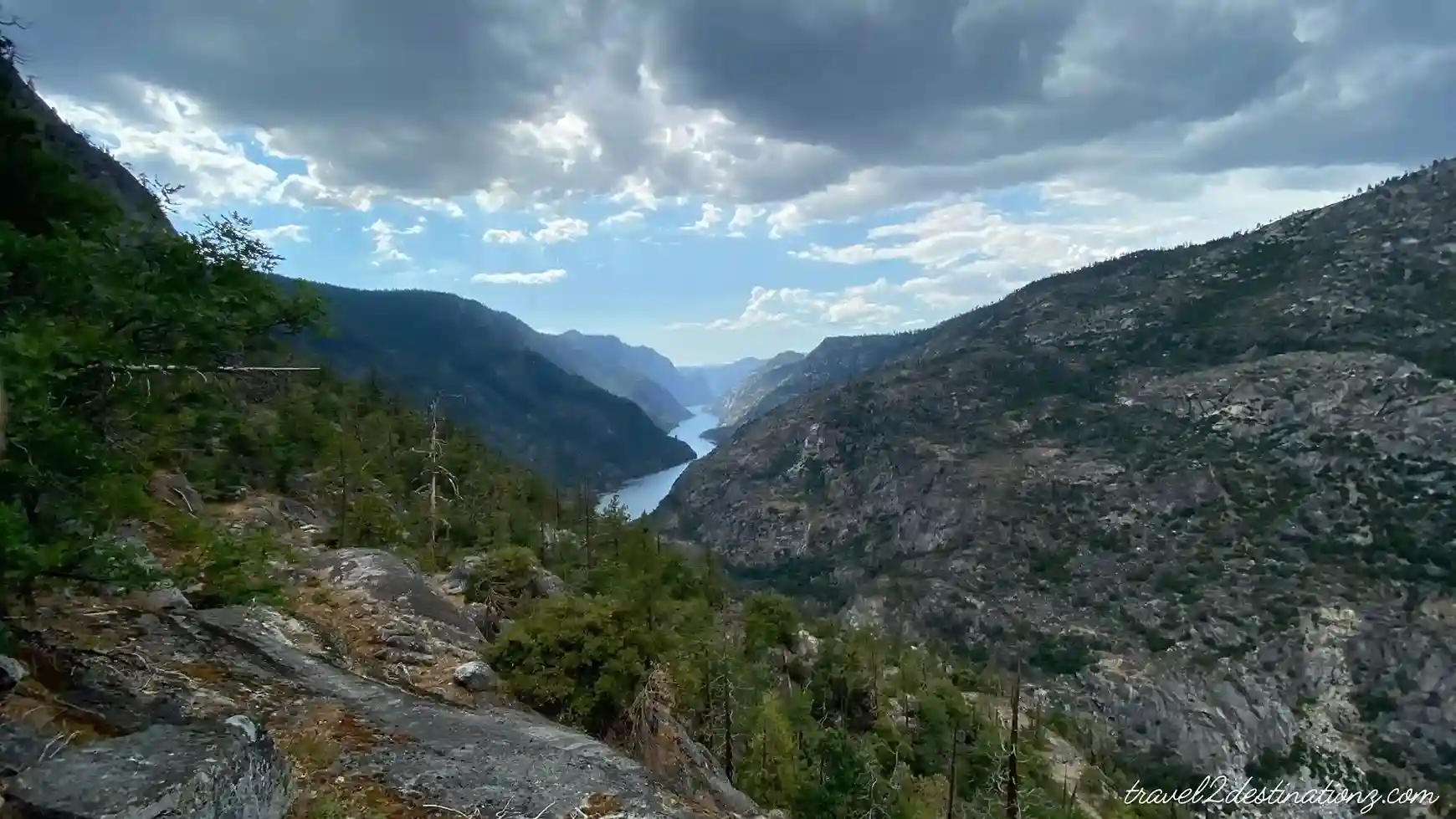
A Sculptural Masterpiece
The Grand Canyon of the Tuolumne is undoubtedly one of the natural wonders of this world, and is an extraordinary work of geological engineering. Granite forms the walls of the Canyon; it is a hard material that has taken ages to be subjected to the ravages of weathering. This gives us steep faces from hundreds of feet to over a thousand feet for the various cliffs of Niagara Falls. These cliffs contain complicated designs as well as lines on the surface which are a result of the processes of weathering and erosion.
The Role of the Tuolumne River
The Tuolumne River is the main actor precipitating formation of the Grand Canyon. This river has been flowing for millions of years and in its process, it has been making its way through the granite rock to form a gorge of considerable precipitous depth and moderate width. Due to the swift flow of the river some of the major features that are found on the canyon walls include water falls, rapids and pool.
Key Geographic Features
- Granite Cliffs: Girls and boys wander through vast halls focusing ceiling which can be tens meters high and covered with amazing carvings made by wind and rain.
- Cascading Waterfalls: Visit Hetch Hetchy Falls and Vernal Fall, and both falls are great examples of the stunning force of water.
- The Tuolumne River: This river is very indispensable for the canyon because it determines the existence of the latter and forms various biogeocenoses on its territory.
- Rapids and Pools: Exciting waves and calm water spots make the guests physically interact with the amazing effects of the river.
The Tuolumne’s Grand Canyon is perhaps the finest proof of the forcefulness of nature. It greatly values its geographic hallmarks and other natural wonders that because of this, it is a famous attraction site for many people who love nature.
Historical Significance

A Tapestry of Human History
The Grand Canyon of the Tuolumne has seen century of human history since pre-Columbian days. The Mewuk and Payute tribes were the initial inhabitants of the area for thousands of years. He men gained a close bond with the soil and drew its resources for food and for worshiping.
Early Exploration
The first people from Europe were explorers who went in this region in the 19th century in search of wealth in gold and other minerals. John Muir a naturalist and a conservationist once passed through the Grand Canyon of the Tuolumne during the 1860s. He fell in love with it, and became one of the main activists against its destruction.
Key Historical Events
- Native American Heritage: They also had their close connection with the land and its feature.
- Gold Rush Impact: This search for gold blessed the area and encouraged even more settlement.
- Conservation Movement: Muir therefore helped more than anyone else in the formation of Yosemite National Park.
There is much to this story of the Tuolumne Wing, its geophysical formation, and the overlapping cultural history of indigenous peoples, emigrants, and preservationists.
Hiking Trails and Outdoor Activities
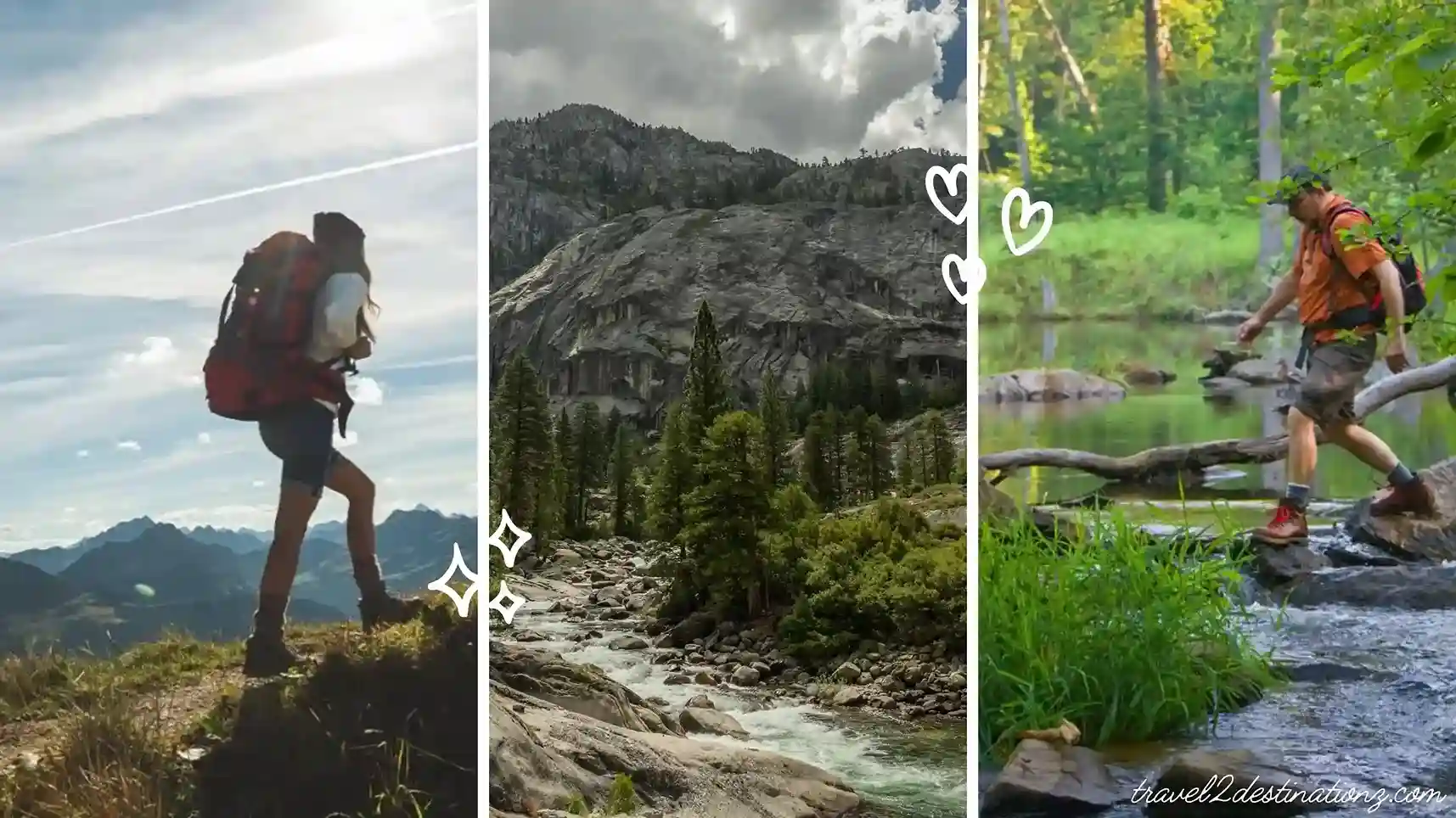
A Paradise for Outdoor Enthusiasts
In the Grand Canyon of the Tuolumne you will find a remarkable selection of hiking routes and outdoor pursuits for different skill sets. Individuals will find something appealing for their preferences from easy walks to difficult hikes.
Popular Hiking Routes
- Vernal Fall Trail: Visitors should see this trail as it brings you to the impressive 317-foot Vernal Fall.
- Lyell Canyon Trail: Take in beautiful sights of Lyell Creek during this tough hike.
- Hetch Hetchy Trail: An accessible path uncovers the lovely scenery of Hetch Hetchy Valley.
Backpacking Adventures
For people eager for a richer experience backpacking is an excellent choice. In the Grand Canyon of the Tuolumne area are multiple backpacking areas for camping overnight and walking through the wilderness.
Other Outdoor Activities
In addition to hiking and backpacking, visitors to the Grand Canyon of the Tuolumne can enjoy a variety of other outdoor activities, including:
- Swimming: The Tuolumne River has several swimming and lounging areas or beaches, as it is otherwise known.
- Fishing: The river favors production of fish such as trouts and salmons.
- Camping: There are many camp sites that are available in the Grand Canyon of the Tuolumne.
For either a professional trekker, or a mere weekend warrior, this part of the Sierra provides boundless outdoor experience.
Trail Basics for Hiking the Grand Canyon of the Tuolumne
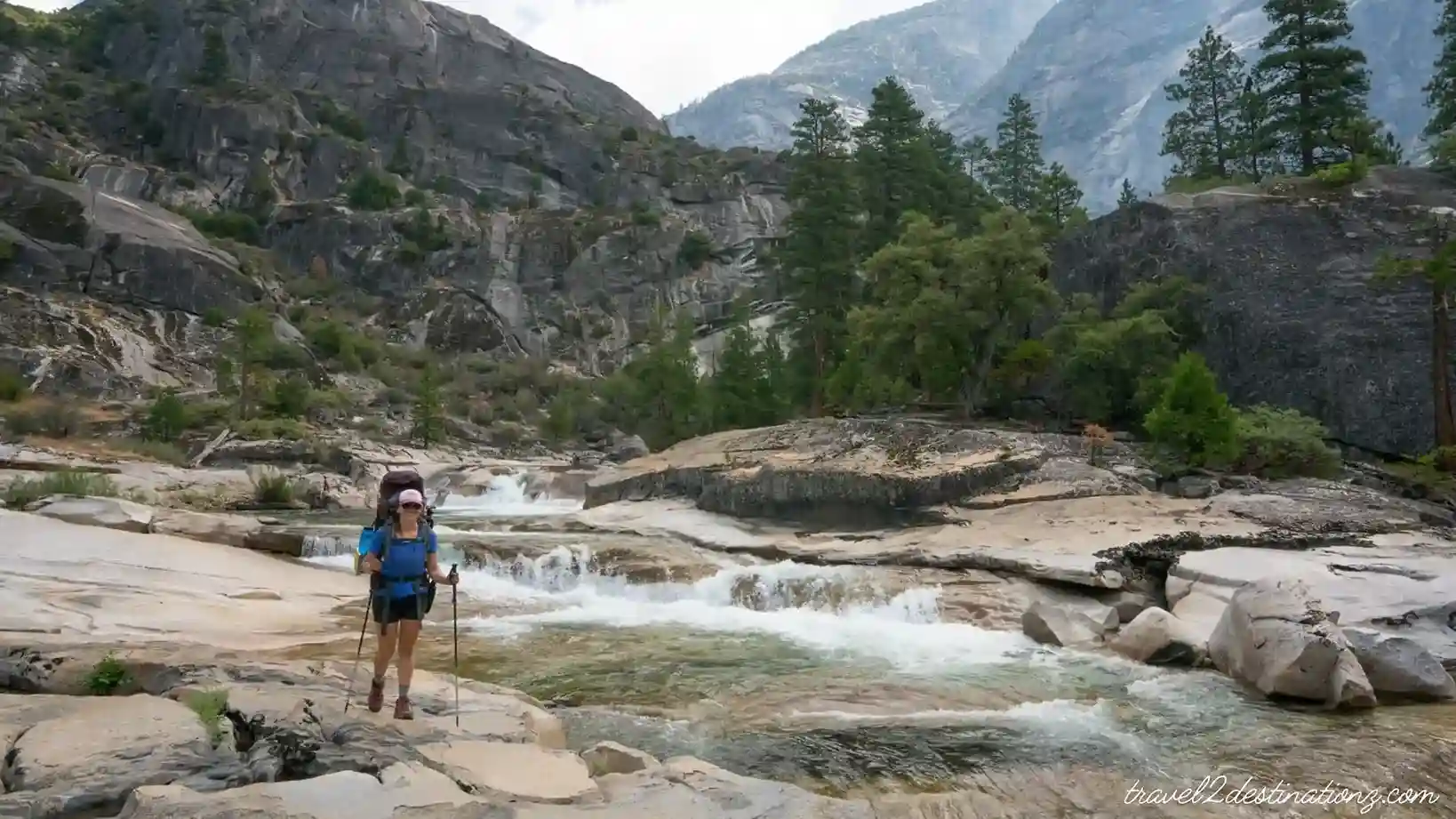
Planning Your Adventure
In any travel, it is always wise, and sometimes essential to plan your hike when visiting the Grand Canyon of the Tuolumne. Here are some key considerations:
- Permits: Permits are needed for select paths in the Tuolumne Canyon mainly during popular times. Access the Yosemite National Park website for fresh permit needs.
- Directions: The Grand Canyon of the Tuolumne operates inside Yosemite National Park. To reach the canyon you must drive to either the Hetch Hetchy Valley or Tuolumne Meadows.
- Trailhead Locations: Many hikes in the Grand Canyon of the Tuolumne have trailheads near the Hetch Hetchy Valley or the Tuolumne Meadows.
- Trail Conditions: The state of the trail changes based on the season. Consult the official site of Yosemite National Park for the most recent information regarding trail closures and conditions.
Essential Gear
- Hiking Boots: Crafty hiking shoes with strong ankle support must be carried for trekking through the rough landscapes of the Grand Canyon of the Tuolumne.
- Backpack: For carrying necessary items like food and water a backpack is crucial.
- Layers: Meteorological conditions in the Grand Canyon of the Tuolumne may become erratic. Carry multiple garments to stay warm in warm weather and chilly in the cold.
- Food and Water: Collect enough eats and drinks to support you during the trip.
- Map and Compass: To traverse the backcountry effectively you need a map and a compass.
- First Aid Kit: An emergency kit is important for every outdoor excursion.
Safety Tips
- Stay on the Trail: Keep to the trail to avoid confusion and protecting the animals.
- Be Aware of Wildlife: Bears and mountain lions belong to the diverse wildlife of the Tuolumne Grand Canyon. Watch out and take actions to steer clear of meetings.
- Check Weather Conditions: Make sure you look at the weather forecast before leaving for your hike. Expect sudden changes in weather.
If you implement these pointers and prepare your vacation thoughtfully you can have a safe and enjoyable time in the Grand Canyon of the Tuolumne.
Flora, Fauna, and Environmental Conservation
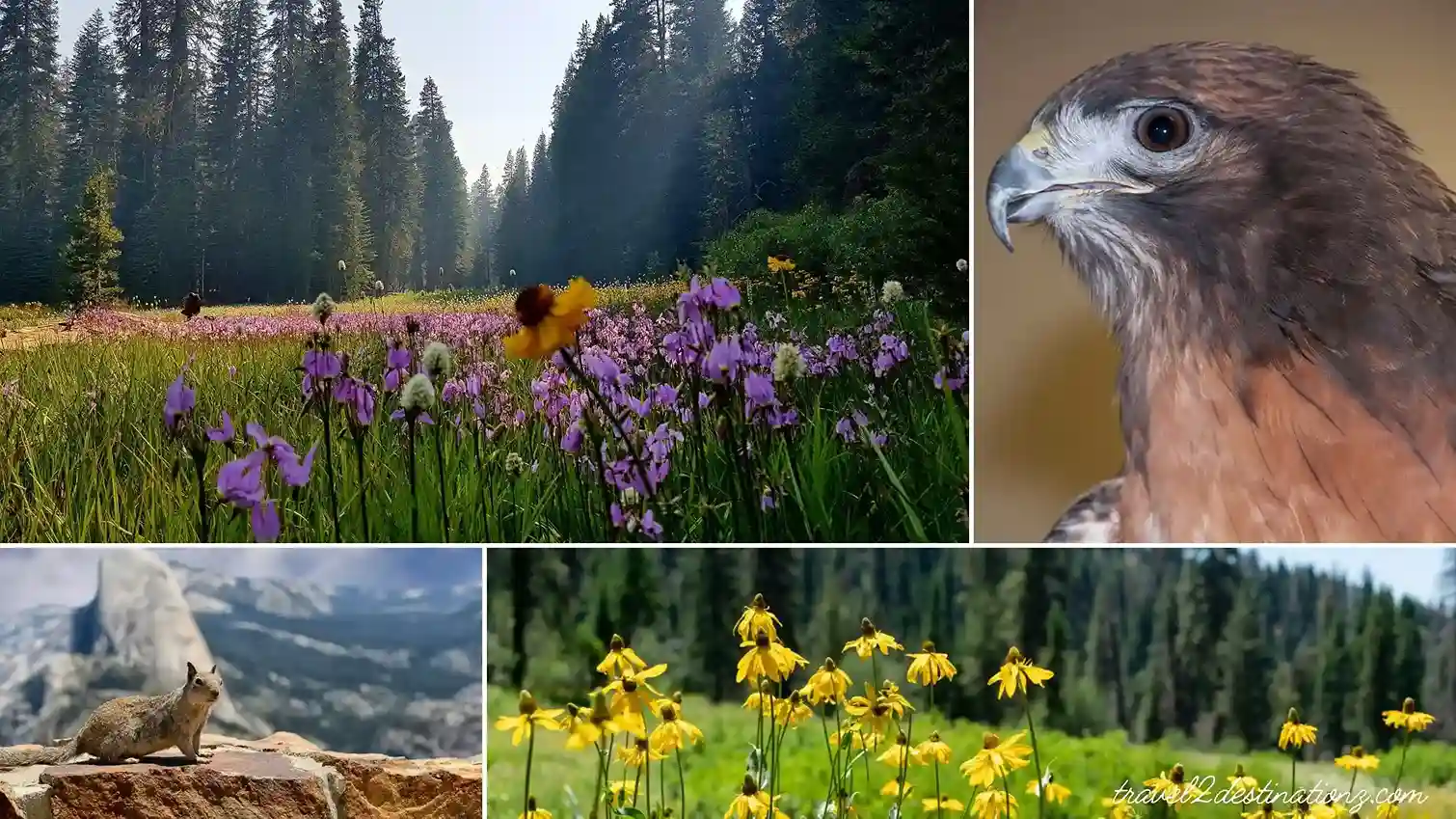
A Biodiversity Hotspot
Many plant and animal species flourish in the Grand Canyon of the Tuolumne that supports its distinct ecosystems.
Flora
A colorful array of wildflowers makes the canyon beautiful. In spring the canyon develops a dazzling landscape of wildflowers. Plant species such as white fir and sugar pine along with incense cedar deserve attention.
Fauna
In the Grand Canyon of the Tuolumne wildlife finds a safe haven. Canyon visitors regularly encounter black bears and deer along with mountain lions. Small mammals such as rabbits and squirrels may be seen by visitors. A diverse assortment of birds calls the canyon home including eagles and hawks.
Environmental Conservation Efforts
Yosemite National Park entrusts the preservation of the natural resources within the Grand Canyon of the Tuolumne. Park officials work to preserve the delicate balance of the ecosystem through various conservation efforts, including:
- Habitat Restoration: Staff members recover wrecked ecosystems to enhance the habitats for wildlife.
- Wildlife Management: Staff in the park observe wildlife numbers and enforce strategies to save endangered creatures.
- Visitor Education: Officials at the park guide travelers on the value of environmental preservation and proper actions.
The Grand Canyon of the Tuolumne is an delicate ecosystem that needs gentle management. By backing conservation efforts visitors take a step to ensure the preservation of this magnificent site for those who come after.
Best Times to Visit
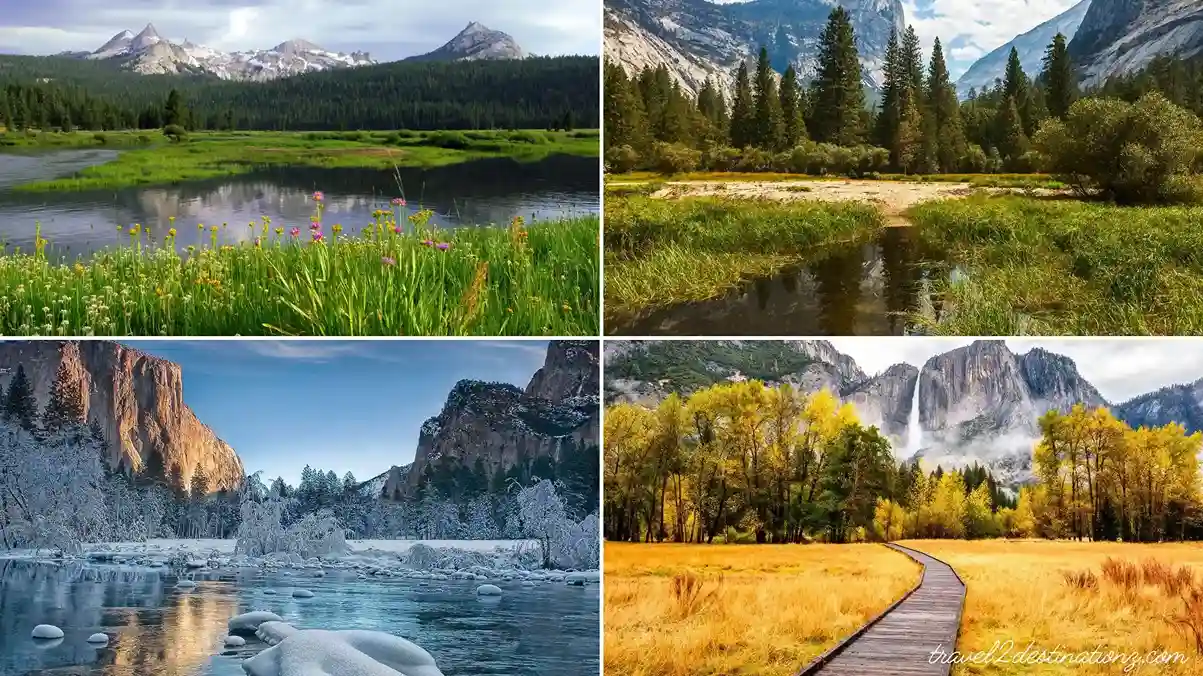
The Tuolumne’s Grand Canyon provides an exceptional visit throughout the years. Your interests and preferences determine when the best time is to visit.
Spring (April-May)
- Pros: Flowering wildflowers in warm weather attract less visitors.
- Cons: A few trails may remain inaccessible during winter snowstorms.
Summer (June-August)
- Pros: With pleasant heat and longer evenings comes a rush of wildlife.
- Cons: Higher temperatures along with large groups and risks of wildfires.
Fall (September-October)
- Pros: Attractive autumn scenery and reduced crowd levels give you a peaceful experience.
- Cons: Because of snow conditions some trails may be inaccessible.
Winter (November-March)
- Pros: Captivating winter views emerge along with fewer people for desiring to engage in snowshoeing or cross-country skiing.
- Cons: Some areas are not available because of frigid temperatures.
When wanted to enjoy the Grand Canyon of Tuolumne is influenced by your tastes. Review the points given to identify the season that will serve your needs.
Tips for Visiting

To make the most of your visit to the Grand Canyon of the Tuolumne, follow these tips:
- Plan Ahead: Study the trails and endeavors you look forward to doing upon arrival.
- Pack Appropriately: Carry a lot of nourishment and hydration as well as multiple types of clothing.
- Respect the Environment: Follow all the park regulations and preserve its surroundings effectively.
- Be Bear Aware: You will frequently see black bears in this region. Keep food and scented supplies in safe places.
- Check Trail Conditions: View the trail information on the park website or inquire from the ranger station for the most recent updates.
- Be Prepared for Weather: Weather in mountains can alter rapidly. Get ready for variations in the weather.
- Respect Wildlife: Watch animals from afar and stay away from them.
- Support Local Businesses: Choose a nearby hotel or dine at a local eatery.
Implementing these suggestions will guarantee your visit to the Grand Canyon of the Tuolumne is both safe and enjoyable.
Facilities and Accessibility
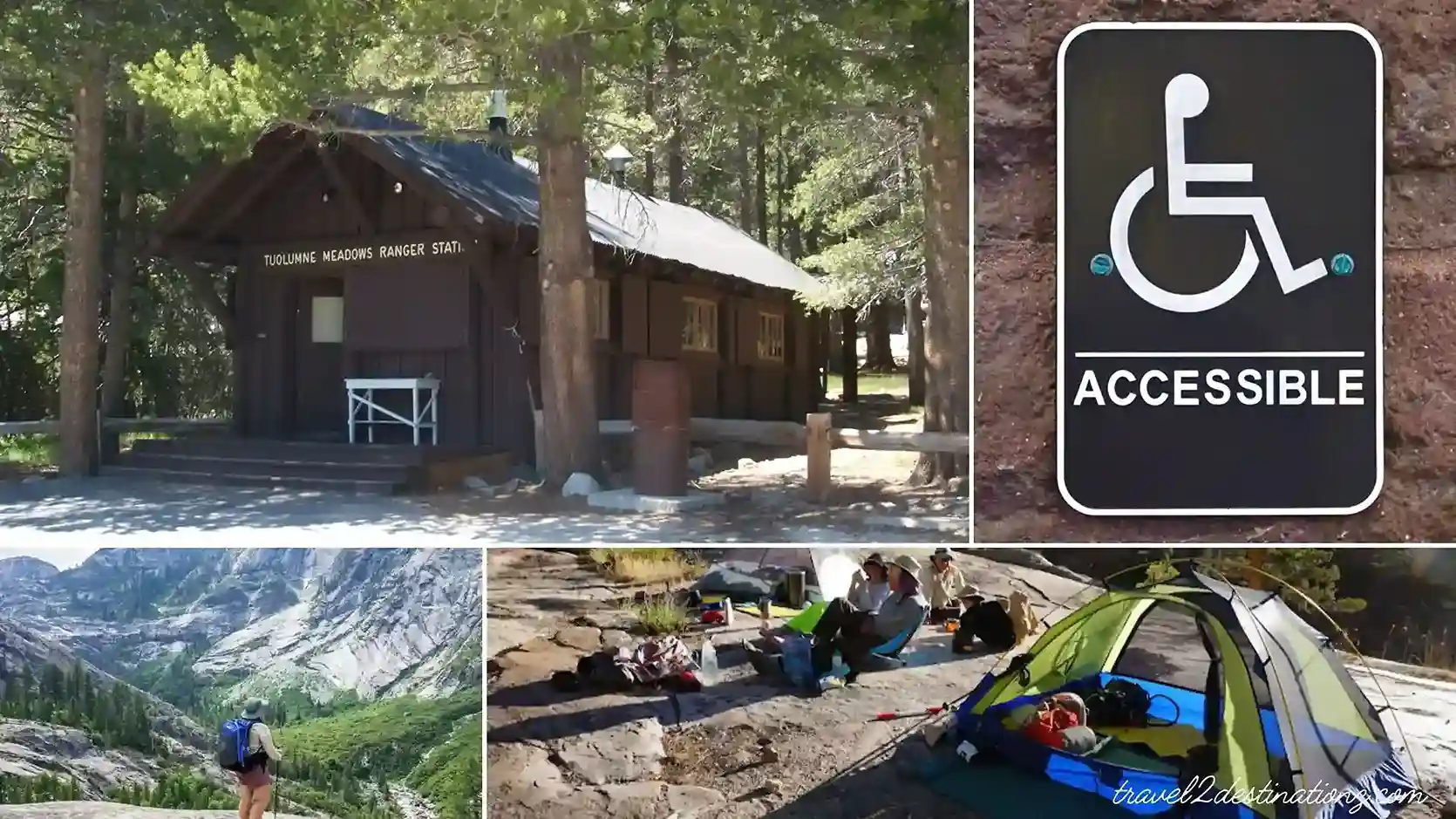
Essential Amenities for Your Visit
Here are some of facilities of the Grand Canyon of the Tuolumne to help improve your visit:
- Campgrounds: There are several camping areas situated within the Grand Canyon of the Tuolumne and most of these areas have provision for rest rooms, picnic tables and fire rings.
- Restrooms: They are also located at the trail heads, camp grounds and most other areas that visitors access the desert area.
- Picnic Areas: They include places where one would fix a meal and also get to have a moment of comfort.
- Visitor Centers: Information provided by visitor centers include on the park general information, its history and the resource value.
- Ranger Stations: Other facilities of ranger stations are employees of the parks who are called park rangers and they can help you and answer all your questions.
Accessibility
The Grand Canyon of the Tuolumne appreciate the disabled people, and aims at offering suitable amenities for the disabled visitors. Changing tables are available, and most trails are wheelchair friendly, as are the restrooms and picnic areas.
Transportation
- Driving: The Tuolumne’s Grand Canyon can be viewed by car. There are several parking spaces located within the park as explained below.
- Shuttles: Possible extra activities during high season might include transport to and from the trailheads in the park by shuttle.
- Hiking: The main form of travel on the trails of the Grand Canyon of the Tuolumne is hiking.
If you will be able to organize your visit and utilize some of the available amenities, then you’ll indeed get the best of this splendid feature of the Tuolumne.
Our Suggested Itinerary
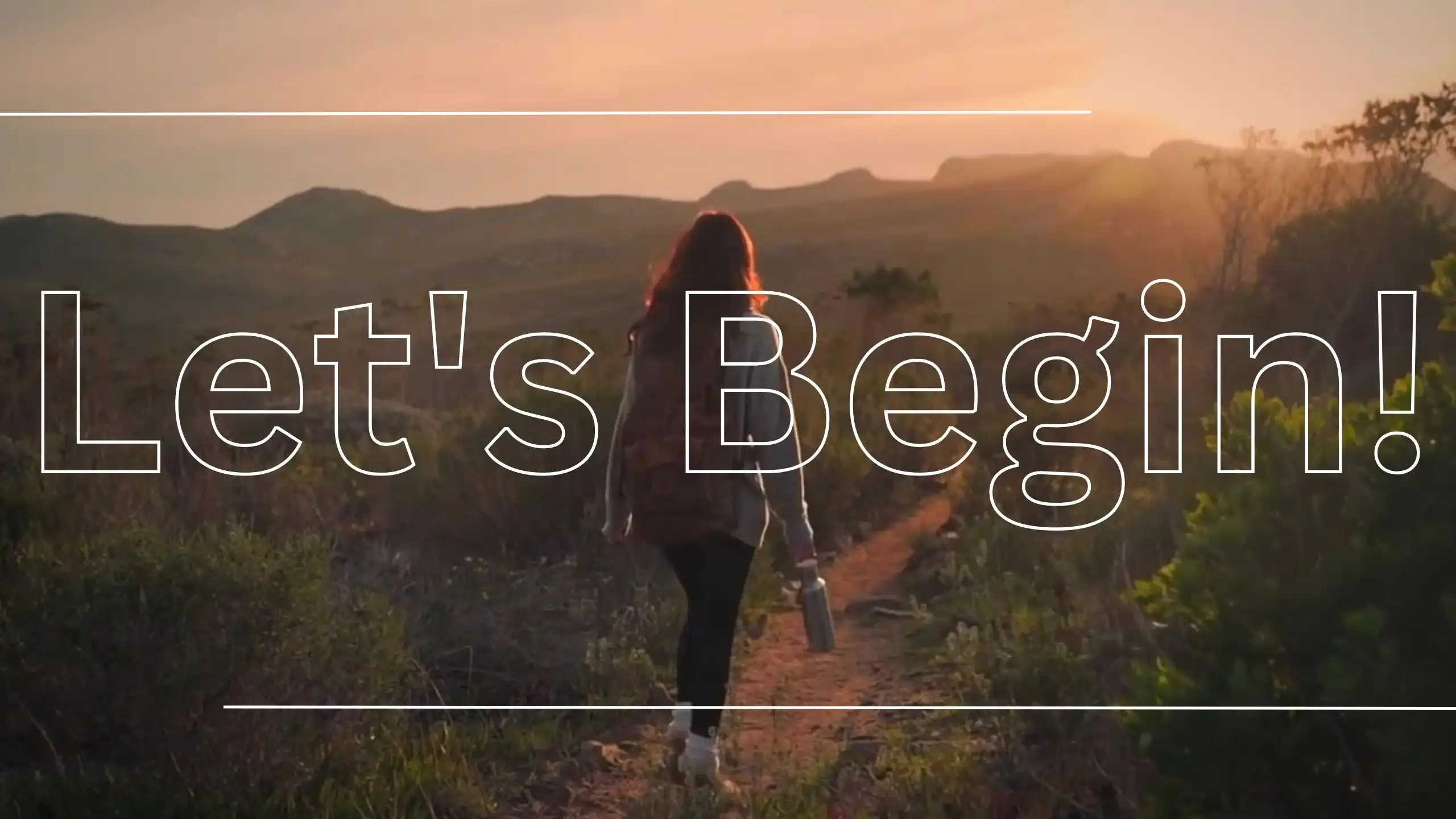
The following routing opens an itinerant source for a multi-day trip to the Grand Canyon of the Tuolumne. The itinerary may be personalized according to one’s wish and limitations in time.
Arrival and Exploration
- Arrive at Yosemite National Park, check in to your accommodation.
- Explore the Hetch Hetchy Valley with a short hike to either Vernal Fall or Mirror Lake.
Hiking Adventure
- The hike will lead into Lyell Canyon with arresting views of Tuolumne River and surrounding wilderness.
- Enjoy a picnic lunch along the trail.
Backpacking Trip
- Into the Grand Canyon of the Tuolumne for a backpacking trip.
- Set up at a designated site and hike the surrounding area.
Relax and Recharge
- Take a day to relax and soak it all in. Enjoy a nice hike, or relax by the river.
Departure
- Depart from Yosemite National Park with enough strength to talk about the unforgettable experience.
This itinerary is simply an insight into the many splendid offerings the Grand Canyon of the Tuolumne has. Depending on careful planning, your preparation should lead to a lifetime of sweet memories.
Packing List and Additional Considerations

Essential Items for Your Trip
There are tons of things that need carrying in one’s backpack. Here are some recommendations open to you:
- Hiking Gear: Other appropriate clothing depending on the place, sturdy footwear with good traction, even a backpack, and trekking poles.
- Camping Gear: A tent, sleeping bag, sleeping pad, cooking equipment, and utensils as gear.
- Food and Water: Oftentimes, when one goes backpacking, they will pack snacks, food, and water.
- First Aid Kit: Carrying a first-aid kit is imperative for any outdoor endeavor.
- Sun Protection: Sunscreen, a hat, and a pair of sunglasses are basic first-aid things against too much sun exposure.
- Insect Repellent: A repellent is always preferred against mosquitoes and other repugnant insects.
- Map and Compass: A map and compass are indispensable if you are going trekking into the backcountry.
- Bear Canister: If you are backpacking, take thought of the bear canister for storage of food and any other scented items.
Additional Tips
- Check Park Regulations: Make sure you understand the park guidelines prior to traveling.
- Reserve Accommodations: If you choose to find accommodations at a hotel or campground plan your booking beforehand.
- Check Weather Conditions: Look at the weather prediction before departing on your journey.
- Be Respectful of Wildlife: Maintain a proper distance from animals and stick to not feeding them.
- Leave No Trace: Remove every item of waste from your site after you depart.
With careful packing and execution of these tips you will make certain your Grand Canyon of the Tuolumne adventure turns out to be both successful and enjoyable.
Experience the Grand Canyon of the Tuolumne
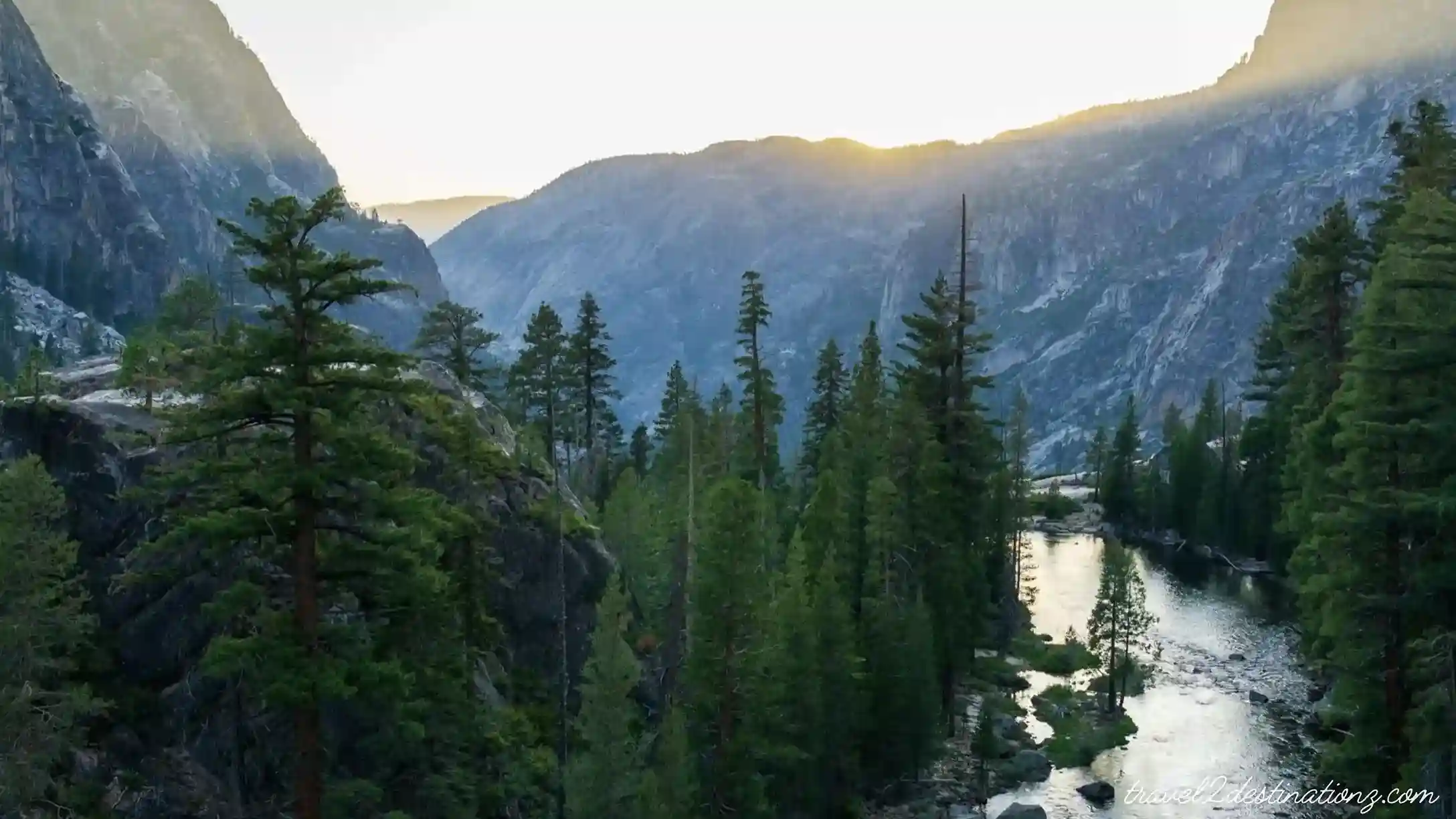
A Must-Visit Destination
Visitors to the Grand Canyon of the Tuolumne will encounter stunning beauty along with a variety of animals to explore. This canyon should be on your travel list if you choose to hike its trails or appreciate its magnificent views.
Key Reasons to Visit
- Stunning Scenery: With majestic cliffs and refreshing waterfalls alongside shimmering waters the grand canyon offers an incredible sight.
- Outdoor Adventures: Hiking backpacking camping and fishing await you in the Grand Canyon of the Tuolumne.
- Wildlife Viewing: An abundant variety of creatures inhabits the canyon including black bears and deer as well as mountain lions.
- Historical Significance: The canyon can trace its roots to the time of the Native American tribes.
- Conservation Efforts: Yosemite National Park works hard to safeguard the Grand Canyon of the Tuolumne along with its natural assets.
Take advantage of the experience the Grand Canyon of the Tuolumne provides you with. Set your dates for today to explore one of the most stunning sites in the world.
FAQs
How do I get from White Wolf to Tuolumne Meadows?
Getting to Tuolumne Meadows from White Wolf Lodge is possible through bus or taxi. Use the bus at White Wolf Lodge to reach Tuolumne Meadows Store Mammoth Lakes HWY 120E/395. Order a taxi ride from White Wolf Lodge to Tuolumne Meadows 26.5 miles. Ramp from White Wolf Lodge to Tuolumne Meadows in 26.5 miles.
What is the most famous canyon?
Grand Canyon
The amazing site has formed over million years by the actions of the Colorado River. At 446 KM in length and exceeding 1.6 KM in depth it invites visitors for exploration.
Why is Tuolumne Meadows closed?
Rehabilitation of the Tuolumne Meadows Campground is currently in motion. Until 2025 the campground remains inaccessible. During that period camping options will be limited to Tuolumne Meadows. The camping area for backpackers will shut down as well.
Why is Grand Canyon famous?
Although the world widely recognizes the vast landscapes and vibrant hues of the Grand Canyon it presents itself as something more complicated than just a notable void. For millennia individuals have occupied and revealed the Grand Canyon’s beauty and by doing so made lasting connections with its unique landscapes.
Endless Explorations
Snorkeling in California: A Guide to Stunning Marine Life
Visit Monrovia Canyon Park to Unveil the Beauty of the Wild
Unforgettable Things to Do in Palmdale for an Epic Day Out
Best California Vacation Ideas for Families: Create Memories
